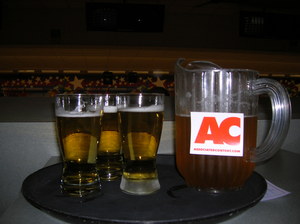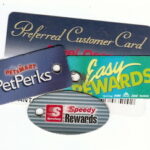In a normal grocery or general store setting, there are small shelving units in between the ends of every aisle that are typically called end caps. Depending on the layout of your store, end caps may well be your most dependable opportunity for successful merchandising. If you are managing a store that has the rest of the store’s space dictated by strict planograms, you might find that end caps are one of the few spaces in your store that you are able to get creative with week after week and learn what really moves on end caps as opposed to what doesn’t. End caps are also an excellent opportunity to let your department supervisors show you what they can do with their own merchandising ideas as they grow into management material. Here’s a few pointers to play around with in your store:
Themes
Depending on your store, you may find that most of your end caps need to go to weekly sales items so that there is plenty of sales merchandise on the floor. However, you should always have at least a couple of end caps available to get creative with, and the best way to utilize them is to build them around some sort of theme. Regardless of what kind of store you are running, seasonal merchandise is a no-brainer: back to school, holiday gifts, home and lawn maintenance, it’s always the time of the year for something.
Another great idea for end caps is featuring a popular product with all of the necessary add-ons. For instance, some sort of home printer might sell itself, but a tasteful end cap with a plugged in demo printer, examples of photo prints, extra ink, paper, cords, et cetera will stop to draw in the customer. If the customer is sold, he or she will have a reminder from your end cap of all of the accessories that might be needed, and you’ll be less likely to miss out on those critical add ons.
Draw Them In
Although less is more when it comes to signage and fancy shippers, having a couple of methods of getting the method to stop on their way to the next thing on their list is critical. Since you want to do more than just move out your door buster sales merchandise, consider using a couple other ploys for non sales items. This is also a chance for you to do some merchandising on items that have a considerably higher profit margin than your sales end caps. However, remember to keep it simple. You are drawing in customers that weren’t necessarily shopping for what you are merchandising, so don’t bombard them with more than a few eye catching and useful items.
For instance, if you are carrying electronics, feature one or two items that are out of the box, plugged in, and clearly working. Items like fans, humidifiers, and audio supplies are great for this. If you are carrying a bunch of home décor merchandise, consider dedicating a shelf or two to display what customers can do with the merchandise in their home (kind of like a street display window). Free samples of food are another crowd pleaser. Just be sure that you have plenty of merchandise on your end cap in stock so that the customer can pick it up once they’re sold!
Keep ’em Stocked!
One of the most rewarding things about working in a retail environment is that you are able to clearly see the visible results of your hard work. A district manager or fellow retail professional will know in a heart beat how seriously you do or don’t take the merchandising in your store by how well stocked your end caps are. Even if you are successfully pushing stock to the floor on a daily basis, a ravaged end cap just screams bad management. People generally understand when you run out of a sales item that was on the end cap, but it’s time to change the end cap once your out of stock, even if it’s just for a couple days until the next truck.
Keep It Signed!
This point is critical and seems to be the biggest problem for the average store manager. You or your staff put all of your effort into putting together a killer end cap merchandising strategy only to drop the ball on the most critical point of the deal, telling the customer the price.
I can be an impulsive shopper, but I don’t know how many times I’ve been in a store for a specific item, stopped to look at something that was well merchandised on an end cap, shipper, or elsewhere, and simply gone back to my business because there was no signage indicating the price of the item that had piqued my interest. Make a point of driving this point home to yourself and your staff as you all take ownership of your store: if the end cap doesn’t have correct signage, it might as well be empty.





